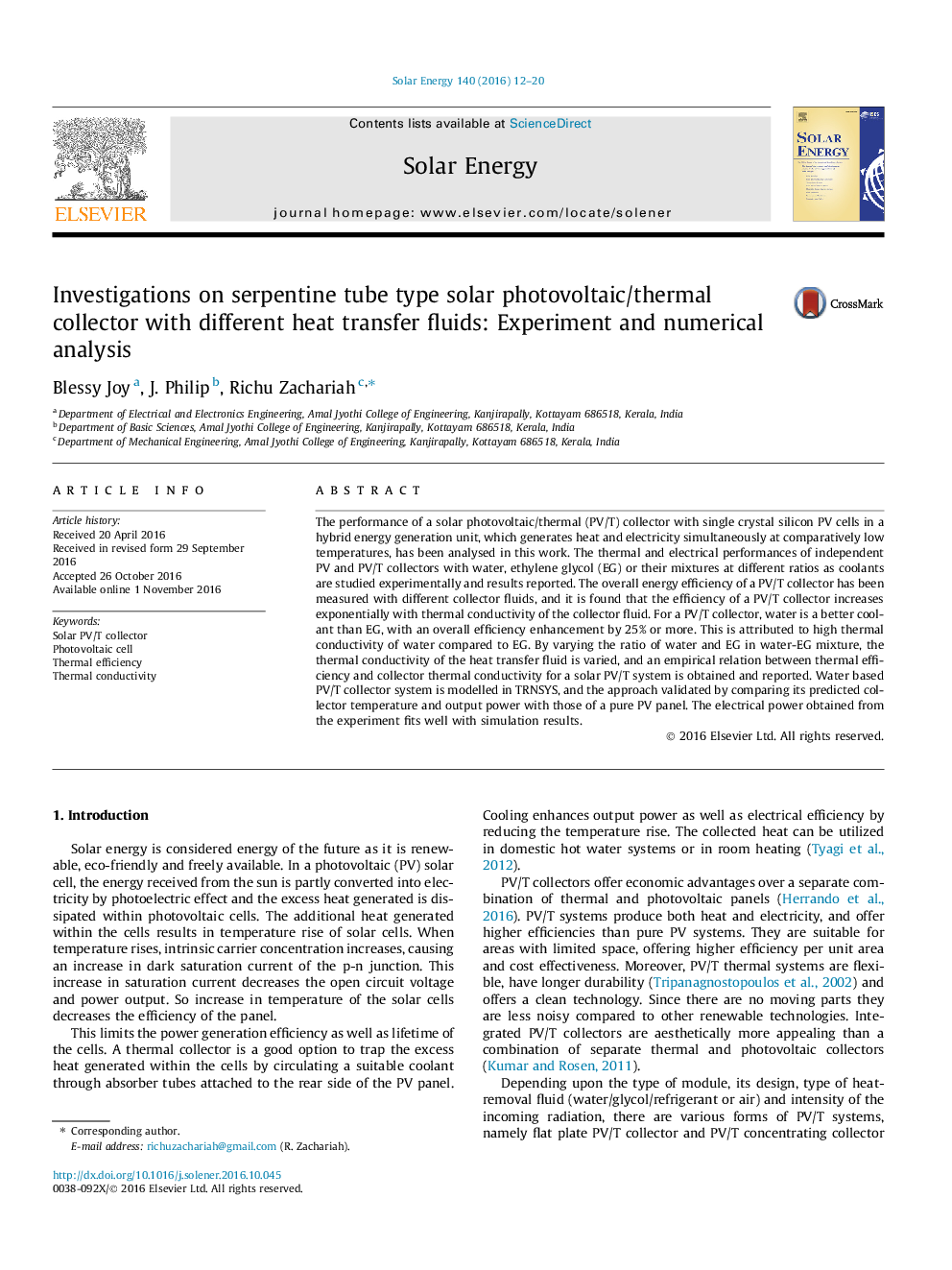| کد مقاله | کد نشریه | سال انتشار | مقاله انگلیسی | نسخه تمام متن |
|---|---|---|---|---|
| 5451015 | 1513078 | 2016 | 9 صفحه PDF | دانلود رایگان |
- A detailed investigation on the efficiency enhancement in PV/T panels with different coolants done for the first time.
- We have shown that the efficiency of a PV/T panel increases exponentially with thermal conductivity of the coolant.
- An empirical relation connecting the above has been obtained and presented in the paper.
The performance of a solar photovoltaic/thermal (PV/T) collector with single crystal silicon PV cells in a hybrid energy generation unit, which generates heat and electricity simultaneously at comparatively low temperatures, has been analysed in this work. The thermal and electrical performances of independent PV and PV/T collectors with water, ethylene glycol (EG) or their mixtures at different ratios as coolants are studied experimentally and results reported. The overall energy efficiency of a PV/T collector has been measured with different collector fluids, and it is found that the efficiency of a PV/T collector increases exponentially with thermal conductivity of the collector fluid. For a PV/T collector, water is a better coolant than EG, with an overall efficiency enhancement by 25% or more. This is attributed to high thermal conductivity of water compared to EG. By varying the ratio of water and EG in water-EG mixture, the thermal conductivity of the heat transfer fluid is varied, and an empirical relation between thermal efficiency and collector thermal conductivity for a solar PV/T system is obtained and reported. Water based PV/T collector system is modelled in TRNSYS, and the approach validated by comparing its predicted collector temperature and output power with those of a pure PV panel. The electrical power obtained from the experiment fits well with simulation results.
Journal: Solar Energy - Volume 140, 15 December 2016, Pages 12-20
